The Women Of Netflix’s Adolescence Aren't The Story's Focus — And That's Okay
There's no sermonising, no victimising, no black-and-white virtue signalling, when it comes to presenting the women who populate Adolescence's world, writes Swetha Ramakrishnan.

Last Updated: 01.17 PM, Mar 27, 2025
This post contains spoilers for Adolescence.
THERE’S A PIVOTAL MOMENT in the final act of the fourth episode of breakout Netflix show Adolescence, in which Eddie Miller (Stephen Graham) finally feels the weight of all the mishappenings with his family over the past few years, and breaks down. His version of “breaking down”, though, does not involve being vulnerable. There is only one dominant emotion that he runs with: anger. He yells, threatens and is even violent with a bunch of teenagers who vandalised his van. Later, he sarcastically shouts at the shopkeeper for staring at him.
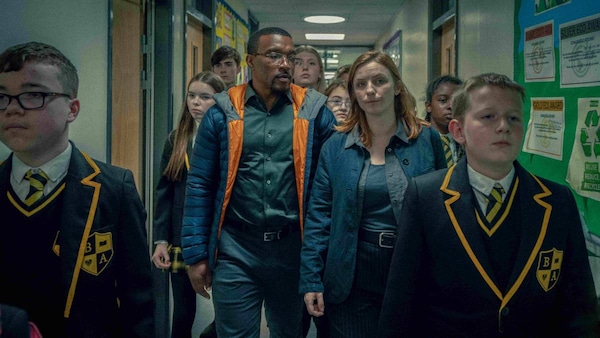
This scene is important for two reasons. First, this bubbling anger and aggression, as we’ll learn by the end of this episode, is generational, as it is — sadly — passed on to his son, Jamie, who commits a violent crime against fellow classmate, Katie. Second, the women who are present in this scene, Jamie’s mother and sister, are conspicuously quiet, scarily absorbing how the men of their family are out of control. The climax of the final episode sees Jamie finally admitting to his father that he is guilty of murdering Katie. But when the conversation moves to his mother and sister, they talk about mundane, everyday things. It shows us the family and gender dynamics of the Miller household, but even more so, it shows us that the thematic focus in Adolescence is on the effects of toxic masculinity (and trauma) on impressionable young boys. The narrative gaze is very much on the men and what their peers, their social circles, their families and the internet is telling them.
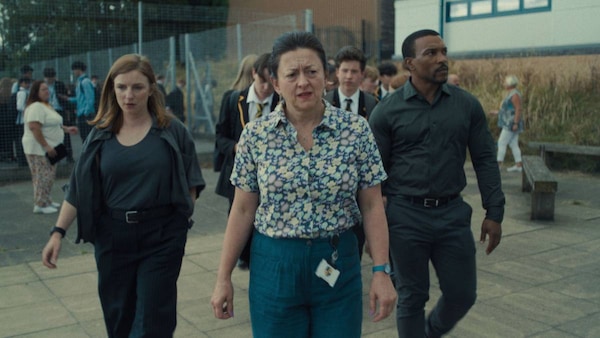
The series is peppered with a few important questions that pull the narrative forward. What made a 13-year-old boy brutally murder his female classmate? Was it her bullying behaviour towards him? Was it the toxic narratives about the “manosphere”, so readily available on the internet, that influenced Jamie? Was it an adolescent frustration that came out as violent aggression (something he may have picked up from his father)?
Adolescence is not interested in giving you answers on a platter. The creators sprinkle the four (technically masterful) episodes with a few baits — what possibly happened, what brought Jamie to this point, who influenced him, how did he commit the crime etc — and we have to piece our version of the story together. Similarly, Adolescence has a surprisingly minimalist view on the place and importance of women in this story. No sermonising, no victimising, no black-and-white virtue signalling, when it comes to presenting the women who populate this fictitious world. The women are not the central point of this story, and it doesn’t seem like a definitive statement being made about gender politics. This is a creative call by Jack Throne and Steven Graham (the creators) to show us a mirror of what the lives of Jamie and his family would be like at the backdrop and aftermath of a crime like this.

There are important moments featuring female characters in the show, but Adolescence is committed to creating a realistic representation of women in this universe they’ve built. It’s the gaze that matters, and makes all the difference — between a show that conveniently sidesteps their female characters to make more room for male characters, and a show that presents audiences with a mirror to society. Adolescence positions itself as the latter, and there are two key moments in which this is solidified (sidenote: both moments are so powerful, I can’t get them out of my mind. Suffice to say, the show would not be as impactful without these moments). (Second sidenote: I use the term “moment” loosely since Adolescence really experiments with concepts of structure and time.)
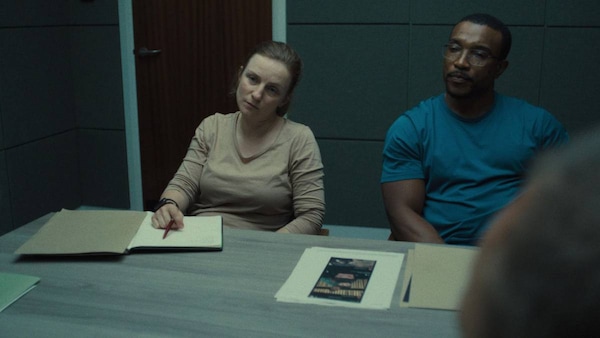
The second episode follows DI Luke Bascombe and DS Misha Frank as they visit Jamie and Katie’s school trying to piece together the motive of the crime. By the end of the episode, there are a few crumbs that give us a somewhat broken picture of what happened with these teenagers leading up to the crime. We are also shown how toxic and abusive the school environment is. DS Frank then makes a compelling point. She’s frustrated about how this entire incident is going to be about Jamie, and Katie is going to be reduced to a footnote, a victim who is forgotten soon, to be eclipsed by the whos, whys, whens and wheres of the perpetrator. And she’s right. From this point on, the show mostly follows Jamie, the characters around him that led to a point of criminality, and his psychological breakdown. We aren’t shown Katie’s parents and we aren’t privy to their grief.
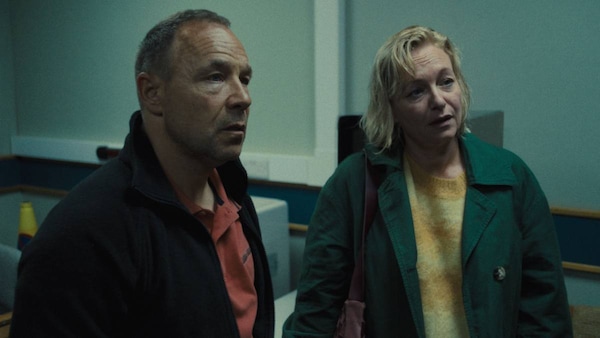
It’s easy to view this scene superficially and accuse the makers of making Katie imperceptible. But the scene that follows — (well, technically the whole episode is one scene, but let’s break the episode down into different segments) — presents a much more nuanced story. The camera pulls out from the school, moves into a drone shot of the neighborhood, slowly but surely moving from the school campus, to a few green fields and buildings, and audiences would be fooled to think this is the end of the episode with credits coming anytime now. But the camera slowly comes back down to the site of Katie’s murder. There are candles, pictures and a mountain of condolence messages.
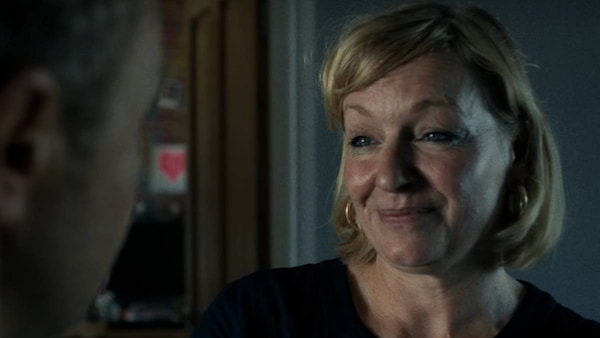
As the camera moves further to ground level, we see Eddie. The final shot of the episode is a close-up of his face, and the horror plastered over it, as if to say, a girl has been murdered and my son probably did it. This is the perfect amalgamation of minimalist and maximalist storytelling, if there ever was one. The urgency of the parent’s horror, the reality of the crime and its imprint on society, the inevitable invisibilising (and posthumous aggrandising) of the victim — all of this conveyed with a technical virtuosity that slaps you in the face. The messaging is clear: this story doesn’t end with the crime. Katie’s murder is merely the inciting incident, the first major plot point, of this story.

The third episode surrounds one long, harrowing conversation between Jamie and his psychologist, Briony Ariston (Erin Doherty). The chat starts off fairly innocently, but by the end of the episode, those of us who still wanted to hold out hope that Jamie is innocent are hit with the brutal reality that this 13-year-old boy has issues, to put it mildly. Aggression, violent tendencies, narcissism, validation-seeking, defensiveness, bipolarity are a few psychological traits that can be glimpsed in the interaction between Jamie and Briony. You start the episode feeling bad for Jamie, and you end the episode being scared of him, and what his influences have reduced him to. The entire gaze of the episode is Briony’s, in that we see Jamie through her eyes. She tries to understand him better by asking him deep and personal questions about his relationship with his father, masculinity, sexuality, temper among other things. And how he responds to being on the spot tells us everything we need to know.

Briony holds herself professionally and calmly, as Jamie has multiple aggressive breakdowns, and as he directs his anger towards her. But at the end of the episode, once Jamie has left the room, she allows herself to emote. She cries, scared but also relieved that her day is over and for the most part, it seemed to have gone okay. At least she got the answers she wanted, after being on this case for seven months. Not only is this episode beautifully written, and is a riveting play out between two characters, it’s also a deep dive into the mind of the psychologist, who’s not the main character of this universe by any stretch. But her analysis is important. Her reading of Jamie is significant to the development of the case. Through her, we also see Jamie for who he really has become.
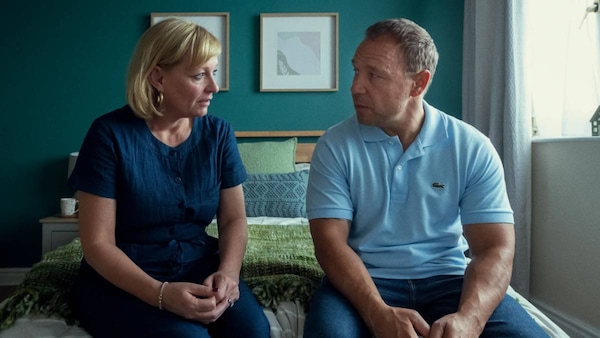
Only a myopic critique of this series would accuse it of being “favourable” to male characters, and sidelining female characters. Adolescence tries its hardest to break the notion that there’s a competition here. It’s not a question of which character is more important, or whose story needs more screen time. It’s trying to show us that this is the reality of young suburban boys in the UK. This is the reality of families who have no clue what their children are reading on the internet in the safety of their rooms. This is the reality of adolescence in 2025. And four single-shot, artistically top-tier episodes later, this reality is driven home.

 Premium
Premium